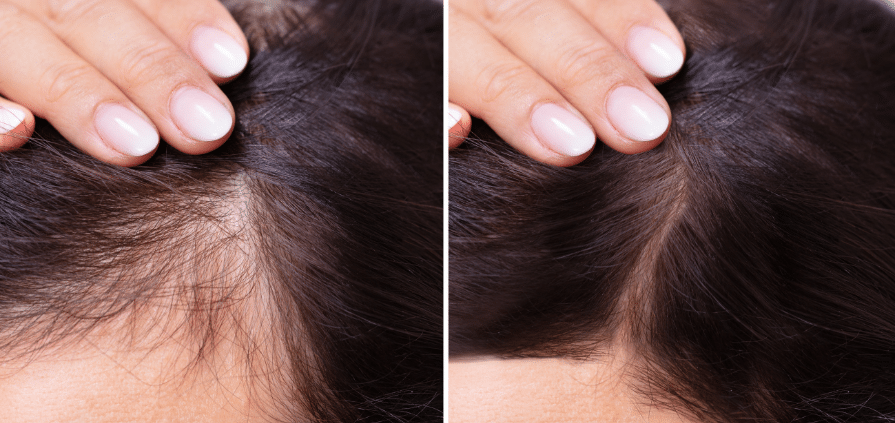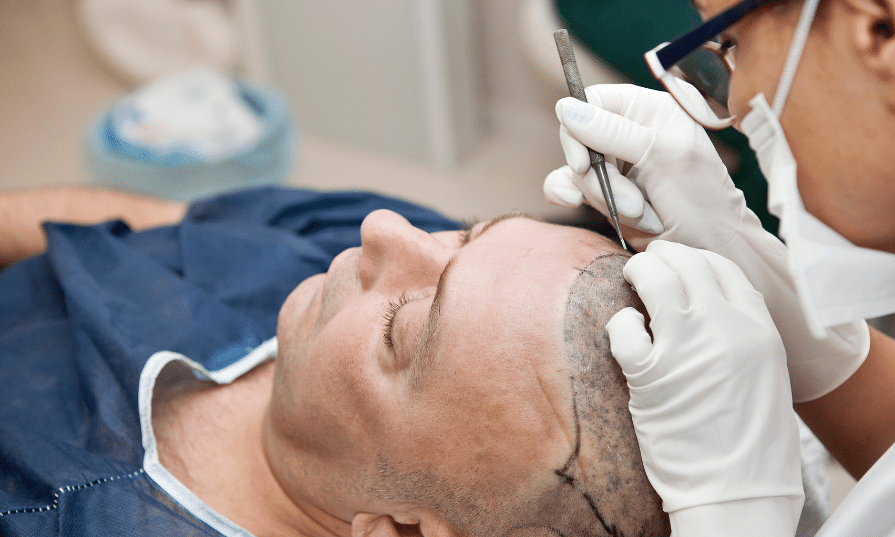What to Expect From a Hair Transplant After 10 Years
Whether you’ve recently undergone a hair transplant in San Francisco and are looking to the future or you’re considering hair restoration and are concerned whether it’s worth it, you may have questions about what a hair transplant after 10 years will look like.
After all, you’re investing in major surgery, and that also comes with some physical risks and a significant price tag. You want to know you’ll be getting a good return.
Up ahead, we’ll explore whether persistent results from hair restoration are possible after ten years. We’ll also talk about other factors that may influence long-term results.
What Happens 10 Years After Hair Transplant Surgery?
To give you an idea of what you can expect from your hair transplant results after ten years, let’s start with this: Today, with recent advancements in hair restoration techniques and technologies, it is possible that in ten years’ time, you may go to the barber or salon with a full head of hair, and your barber or stylist won’t ever know you had hair transplant surgery.
In other words, it is completely possible to maintain your results ten years after hair transplant surgery. Moreover, when compared with those early days right after your surgery, your hair may even look far better in ten years.
One Key Is Choosing the Right Surgeon
Of course, not all hair transplant patients are able to achieve such wonderful results as we are outlining here. Patients who had hair transplantation in the 70s and 80s, for example, may not have great looking heads of hair now simply because the technology was not half as good back then.
In particular, at that time, thick chunks of hair called hair plugs were primarily used to restore thinning hair and a receding hair line. With further thinning of the hair due to aging, these plugs became even more over time.
Additionally, even today, there are surgeons who are not particularly skilled at hair restoration. For these unfortunate patients, it’s possible that they won’t have high quality results after ten years.
For the rest of patients who do choose an experienced plastic surgeon, it is highly likely that their hair will look great 10 years after hair transplant surgery.
The Effects of Aging
Despite most patients having a great long-term outcome from hair restoration these days, there are two factors that may contribute to the waning of results over time — even if you pick a top-notch hair restoration surgeon. Both have to do with the natural effects of aging:
Graying Hair
Over time, everyone’s hair will become gray. This isn’t something we can stop, but it may change your hair restoration results as gray hair tends to have a different texture and thickness.
Thinning Hair
Most people’s hair will thin out over time as well. As we make it to our 70s, 80s, and beyond, hair tends to become less lush and dense. This can also cause some of the thinning or balding you perhaps had prior to your surgery to return.
Ensuring Great Long-Term Results After a Hair Transplant
Use the following tips to help ensure a great outcome to your hair transplant surgery and excellent results for many years to come.
Choose a qualified surgeon.
First, select a board certified plastic surgeon with hair transplant experience and a strong approach to surgery.
Understand the limits of your donor area.
You want the area where you’ve lost hair to look natural, but you want the donor area to look natural too. In this case, emphasize to your surgeon that you want to make sure your donor area is not over harvested as this can actually cause hair loss in these areas (typically on the back of your head) as well.
Consider whether FUE or FUT is the best method for you.
To be sure, both methods of hair transplant surgery have their pros and cons. FUE, which stands for follicular unit excision, extracts individual hair follicle units for a more seamless look.
On the other hand FUT, which stands for follicular unit transplantation, uses donor strips. While this means that FUE typically has less noticeable scarring, FUT may be better as it tends to have more consistent results and may require fewer treatments.
Go with a natural hairline.
When talking with your surgeon, stress that you want a natural looking front hair line. While we may think that the hairline above the forehead is a straight line, it really isn’t. Ideally, your surgeon will be keenly aware of this and already have plans to create a natural, normal looking hairline. But if not, be sure to bring up the fact that you certainly do not want a hairline that looks manufactured.
FAQ: Hair Transplant Surgery After 10 Years
When does hair growth start after hair transplants?
New growth from the transplanted hair follicles should start within three to four months. Note that it’s normal for the initial transplanted hair to actually fall out about one month after hair transplant surgery. The hair follicles themselves should remain intact, and this is where the new hair growth will come from.
Will I need a second hair transplant?
Most patients just need one hair transplant procedure to achieve their goals. If you have further hair loss or your male pattern baldness or other form of hair loss is more significant, however, you may need additional future hair transplant procedures as well.
Will I have hair transplant scarring?
Small scars do result from hair transplant surgery, but you should not expect long term visible scarring. As the healing process continues and healthy hair follicles go through the natural hair growth cycle, scars should be covered by your thicker hair and will also fade naturally. Typically, there is less scarring with FUE hair transplant results.
Will my transplanted hair turn grey?
Yes, just like the rest of your hair, hair transplants turn grey with the natural ageing process.
Arrange a Consultation with Dr. Sieber
Board certified plastic surgeon and professional hair transplant surgeon Dr. David Sieber performs hair restoration surgery at his San Francisco practice. To learn more about this procedure and find out if you’re a good candidate, please call today to set up a consultation with Dr. Sieber.
References
https://www.aad.org/public/diseases/hair-loss/treatment/transplant





